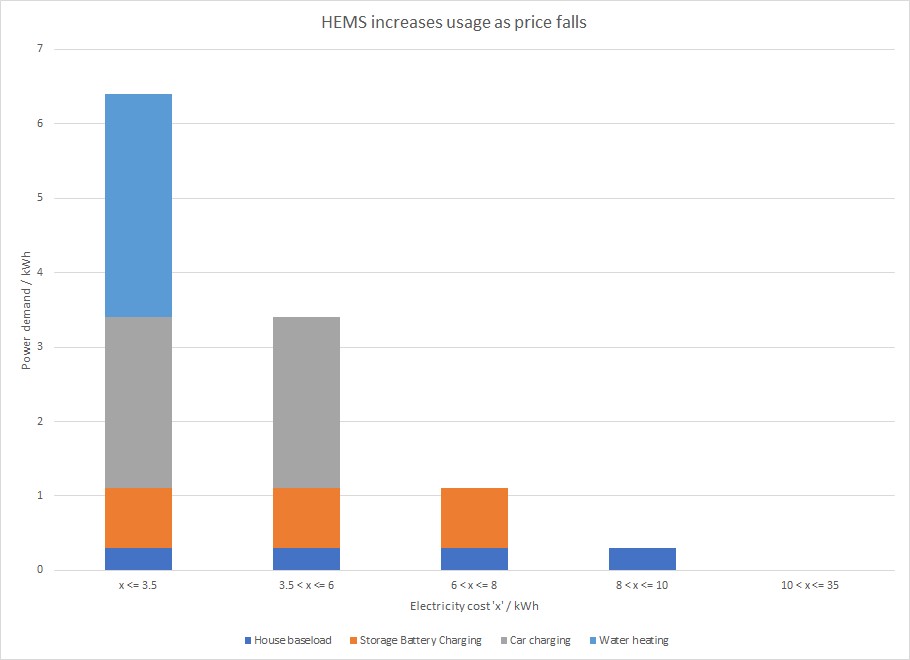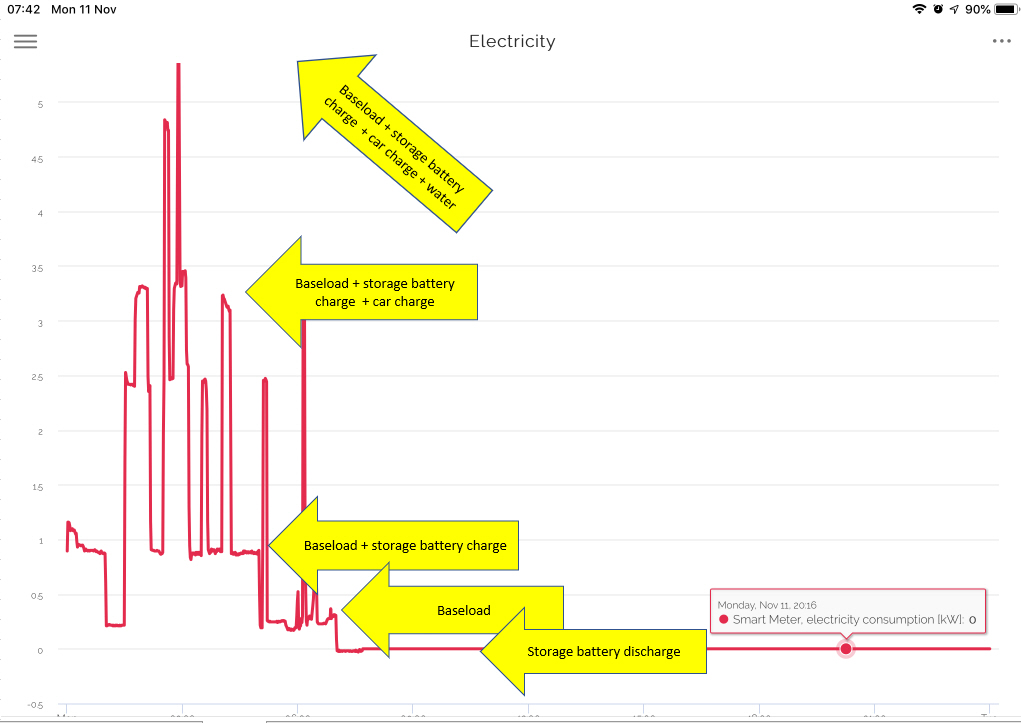One of the features of the way my HEMS works is the inverse relationship between electricity demand and electricity price – electricity demand increases as the price falls and falls as the price rises. This effect helps to contribute to my low average cost for electricity – 5.63 p/kWh ex-VAT most recently (Sep/Oct 2019). The effect exists because my different controlled loads (battery, car and water heating) each need different times to achieve full (approximately 8, 5 and 2 hours respectively).

This chart is illustrative only because day-to-day needs for the different loads may change, and also the electricity price varies half-hour-by-half-hour and day-by-day but typical recent behaviour is shown. The actual rules for each device may be summarised as follows:
- House baseload – support house from battery when cost greater than 10 p/kWh (limit adjusts automatically to reflect pricing on the day), otherwise take baseload from grid.
- Storage battery charging – charge from the grid in cheapest 5 hours over entire 24-hour period.
- Car charging – charge for a total period of so many hours within a window between arrival time at home and departure time the next day, and also any hours during day at equivalent price or lower.
- Water heating – charge for the cheapest 2 hours when electricity price falls below gas price (did not occur on day illustrated below).

These same loads may also be enabled in priority order when the solar panels are in surplus. Priority is:
- Baseload
- Storage battery charging
- Car charging
- Water heating.
